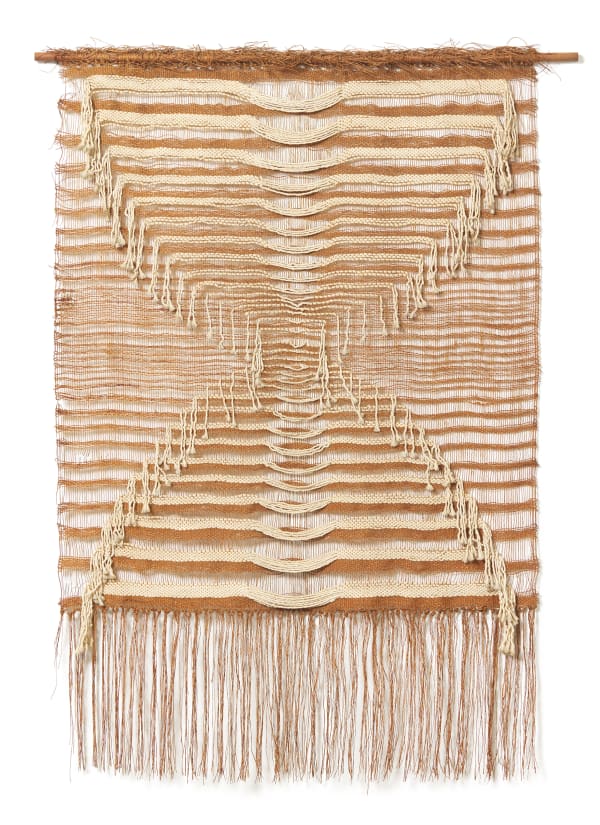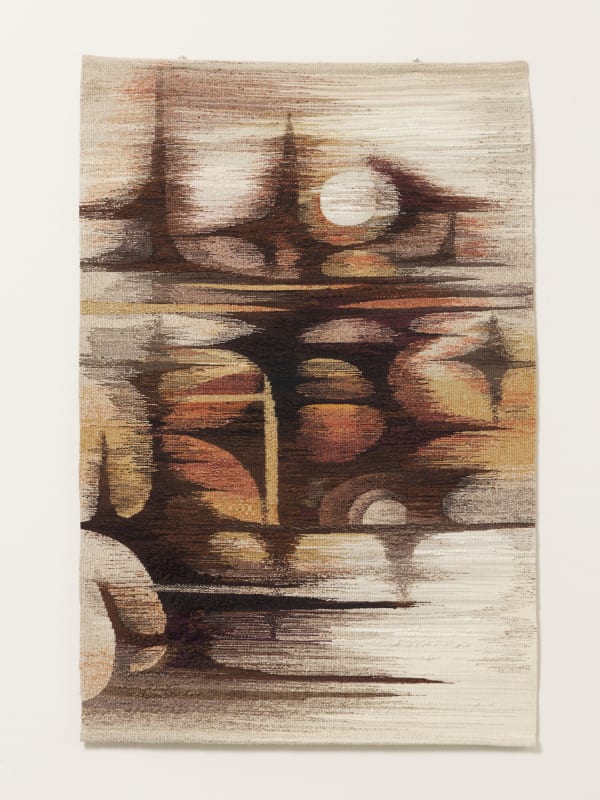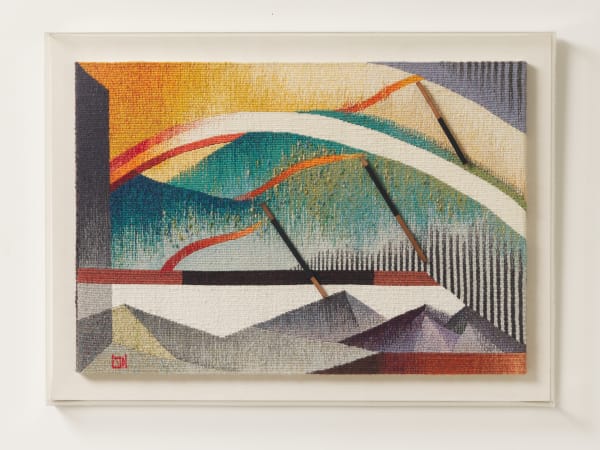-
Tina Kim Gallery is pleased to announce “Weaving the Dawn,” the gallery’s first solo exhibition dedicated to Lee ShinJa—a pioneering artist who is remembered in Korean art history for introducing the “tapestry” genre when the concept of “fiber art” was still unestablished in her native Korea. Marking her New York debut, the show will highlight Lee’s expansion of the material characteristics and aesthetic beauty of thread as a medium. The full breadth of her career, which spans more than half a century, will be represented—from her avant-garde embroidered appliqué work from the 1960s to the more recent “Spirit of Mountain” series that pays homage to her hometown. Featuring preliminary sketches of her early compositional ideas and archival materials that highlight her role as a dedicated educator and researcher, “Weaving the Dawn” will be on view from August 22 to September 28, 2024, with a reception taking place on Friday, September 13, from 6–8 pm.
-
 Lee ShinJa in her studio in the 1970s. © Lee ShinJa
Lee ShinJa in her studio in the 1970s. © Lee ShinJa -
-
In Image of the City (1961), she unraveled the plain weave of the base fabric and twisted subtly colored threads to the loosened ones to create a structural tension previously unseen in traditional textiles. Meanwhile, Portrait of My Daughter (1962), modeled after her second daughter, broke formal embroidery conventions with its semi-abstract representation of a face and hands. Lee’s experimentation with technique and form reaches a crescendo in Screen (1979), which divides space by introducing thick cotton yarn to a deconstructed linen cloth. Lee’s avant-garde approach and subversion of the boundaries between craft and fine art, as well as traditional and modernist technique, received mixed reviews at the time. Some critics claimed that she was destroying the practice of Korean embroidery. Others hailed her as a comet in the craft world.[1]
[1] Lee ShinJa, oral statement recorded by Choi Gongho, The 2013 Oral History Project of Modern and Contemporary Arts in Korea, Series 230: Lee ShinJa. ARKO Arts Archive, 2014.
-

-
 From left to right, Lee ShinJa, Lee Dae-Won, Issey Miyake, Magdalena Abakanowicz, and Lee Kyungsung outside the MMCA, Gwacheon, ca. late 1980s.
From left to right, Lee ShinJa, Lee Dae-Won, Issey Miyake, Magdalena Abakanowicz, and Lee Kyungsung outside the MMCA, Gwacheon, ca. late 1980s. -
Amid this loss and the challenges of being a single parent, Lee discovered a profound passion for creation. From 1984 to 1993, she had three solo exhibitions with works expressing a resilient will for renewal stemming from the artist’s deep reverence for nature’s life-sustaining and cyclical forces. Pieces such as Dawn, Legend, and The World is Beautiful transform images of nature through abstraction: Their densely populated and meticulously layered threads evoke the sky, wind, sunlight, and ocean, suggesting a powerful vitality rising from the earth and a sense of coexistence, hope, and expansion. Critic Kim Bok-Young articulated this as themes of “metaphor of light” and “space of memory” in Lee’s oeuvre.[1]
Reflecting on her childhood memories of nature, Lee said, “Growing up in a rural area, I vividly remember the intense sunlight at sunrise and sunset. I have cherished memories of climbing mountains with my father every morning to witness these moments. The sunlight rising from the East Sea left a lasting impression on me. I have always believed in creating nature as I see it. However, I still feel that my work has yet to match the beauty of my hometown.”[2]
-
After her 1993 solo exhibition, Lee focused on further developing her abstract representations of nature in her “Spirit of Mountain” series. This body of work, which epitomizes her later practice, uses a variety of materials to portray dynamic mountain ranges through intricate diagonal structures. Since the 2000s, Lee’s work has highlighted sculptural abstraction and spatial depth by incorporating new materials such as wood and metal into her tapestries. While maintaining her characteristic color palette of red, yellow, black, and gray hues, she has introduced tonal contrasts, enhancing vertical and horizontal structures to create a more static composition. Her serene landscapes often feature rectangular shapes reminiscent of windows, drawing inspiration from traditional Korean houses, or hanok. Seen through these frames, Lee’s mountainous forms reflect her tranquil and humble vision of simultaneously observing and residing within nature.
Critic Kim Hong-hee, former director of the Seoul Museum of Art, commended Lee’s achievements in challenging gender and genre biases in craft.[1] Furthermore, she observed that Lee’s fiber art subtly reflects autobiographical elements, despite their formally abstract style, offering a foundation for feminist critique. “Weaving the Dawn” seeks to reinvigorate this conversation around historically marginalized artistic practices that have been overlooked due to their associations with women’s domestic labor.
[1] Kim Hong-hee, “Lee ShinJa’s Fiber Art: Breaking the Genre and Gender Bias in Craft,” in Lee ShinJa, Threadscapes (Gwacheon: National Museum of Modern and Contemporary Art, Korea, 2023).
-
Featured Works
Lee ShinJa: Weaving the Dawn
Past viewing_room


















